Latpanchar birding – The heaven for bird lovers
When we were in Sikkim we heard about the recent sightings of Rufous Necked Hornbill in Mahananda wildlife sanctuary. In Facebook, there was continuous postings about Rufous Necked Hornbill nesting in Latpanchar. Why such a hype for this bird? First reason is these hornbills are found in the top of tall trees in deep forest. So seeing them close is often not possible. Second reason is their current population has dwindled to around 10,000. Third reason is this bird can be seen in India only in North East region. During nesting season, as the male has to find lots of food for female, they sometimes move to forest edges. As the male frequently goes off to hunt we can see it, if we were in the right place at the right time. As we were in Sikkim, we didn’t want to miss the opportunity.
We finally got a location in Latpanchar, so we booked a homestay there and reached the place in the pickup jeep arranged by Latpanchar HomeStay. On the way itself we were in for a treat as we saw couple of species of of epiphytic orchids and the beautiful Blue Throated Barbet. He was happily singing away from the top of a tree. I was happily clicking when he was happily singing.
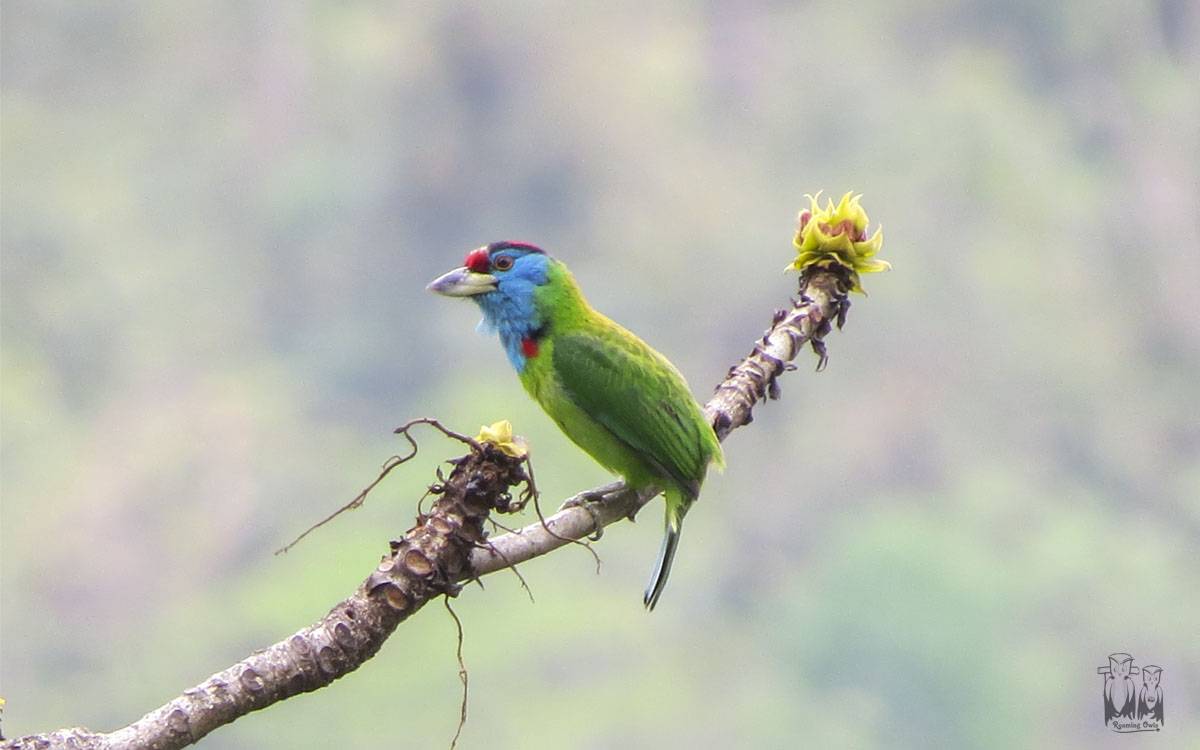
The Blue-Throated Barbet (Psilopogon asiaticus) is a barbet found in the Eastern Himalayas.
By the time we reached the Latpanchar Homestay, the village was covered in mist. We couldn’t even see the nearby trees in mist, if that’s the case then where to see a bird. The beauty of all the houses with colorful garden flowers and the calmness would have been more than enough to satisfy us usually. But this time we were so restless to see the Rufous Necked Hornbill, we were constantly bickering about the weather. The food served in the homestay was simple and delicious. Infact silently we were having a blast, tasting the subtle variations in the food from the other areas. What is birding without good food !
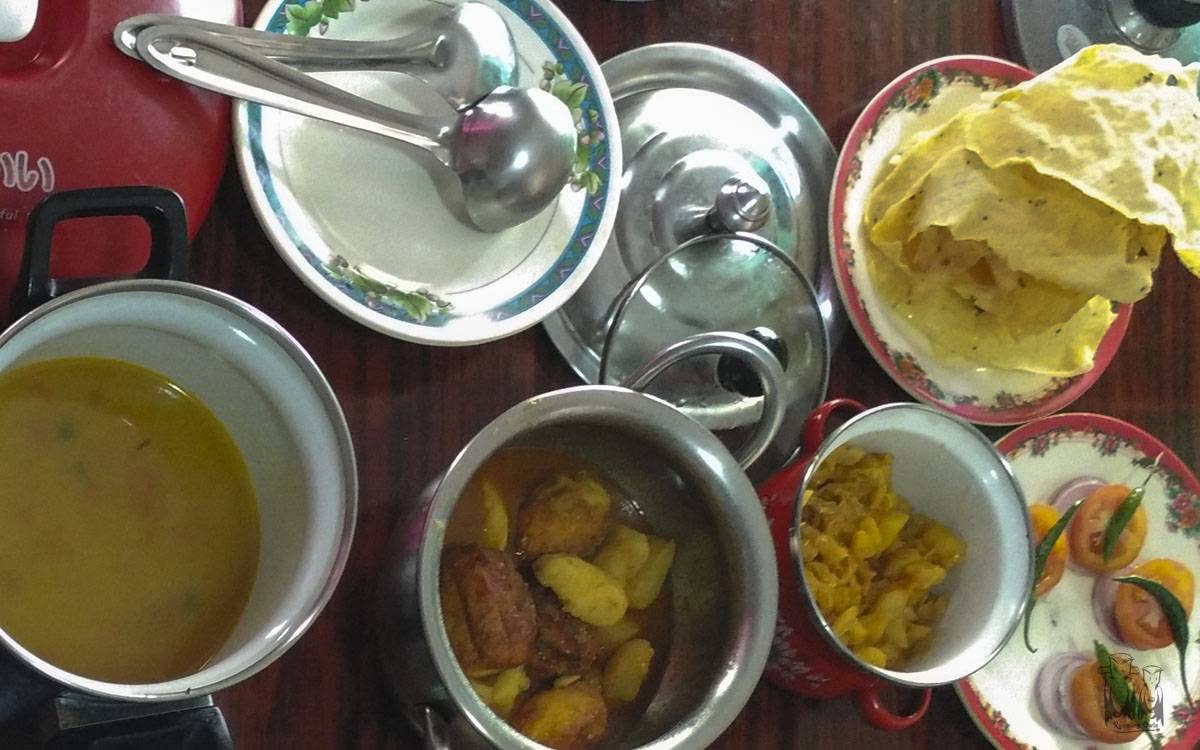
We have to say the food was wonderful. Inbetween the beautiful birds the wonderful food felt even more tasty.
The Latpanchar locals told the weather was bad past few days, so they were not sure when the weather will be clear. The mist cleared out a little, so we decided to give it a chance. A local guide came with us to show the nesting tree of the hornbills. The mist again covered the entire place and now it started drizzling. When we were consoling ourselves that we will see the hornbill next day, we saw another colorful bird crossing us with sticks in the mouth to build nest. In the mist we couldn’t see the bird clearly, but the unique shape helped us to identify the Long Tailed Broadbill bird. Next day early morning it was still misty, so we just walked around the Latpanchar village and heard the Great Barbet sound echoing everywhere.
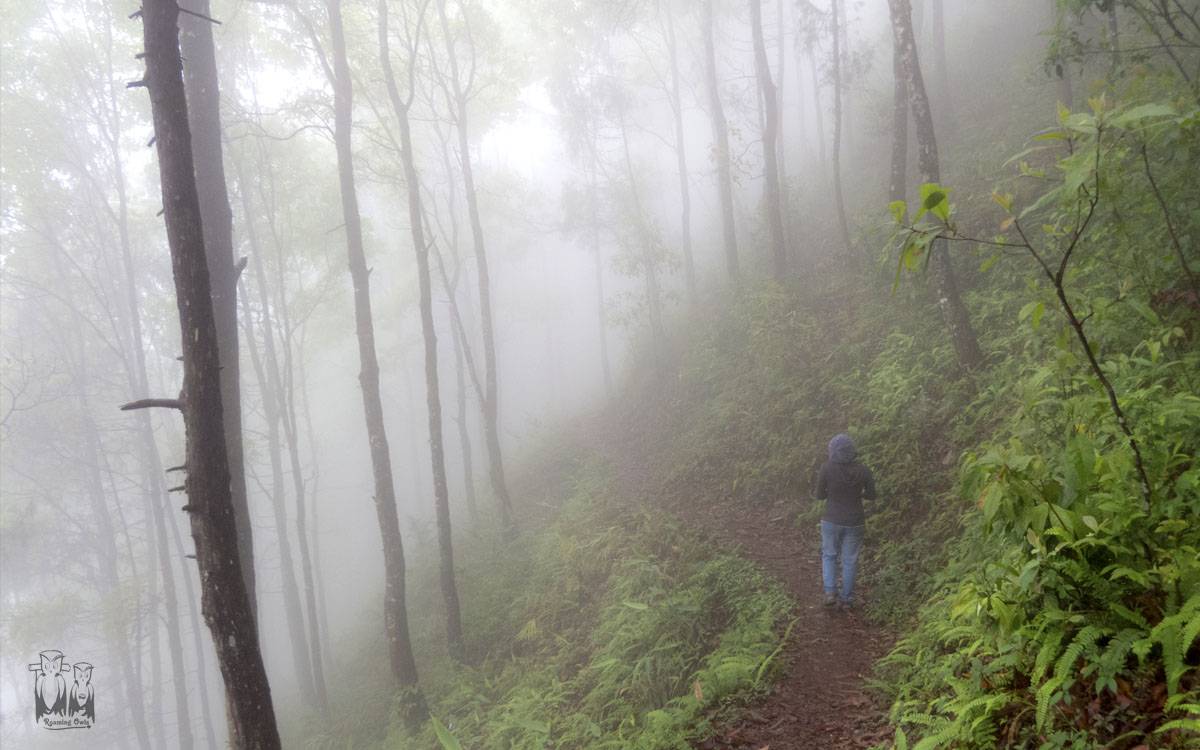
The mist covered forests was an ideal place to look for birds. Some of the rare birds of India were simply roaming around like sparrows in a street.
We then went down to the hornbill nesting tree and waited for few minutes. In that silent forest trail with the Barbet calling sound at distant, suddenly there was a huge wings flapping sound and we were eagerly watching the tree. But we were hearing the sound farther now, the hornbill just took off it seems. The guide told us it will be minimum 2 hours for the bird to return with food. When this huge bird was nesting in a tall tree, another small bird was having its small nest on the roadside. That cute bird was Black Lored Tit and this one was feeding its chick. I sometimes wonder how small would the chick be when their parents are themselves tiny birds. But looking at them you have to admire the dedication of a parent. They are so busy that you only get a fraction of a second in one place to get a picture.
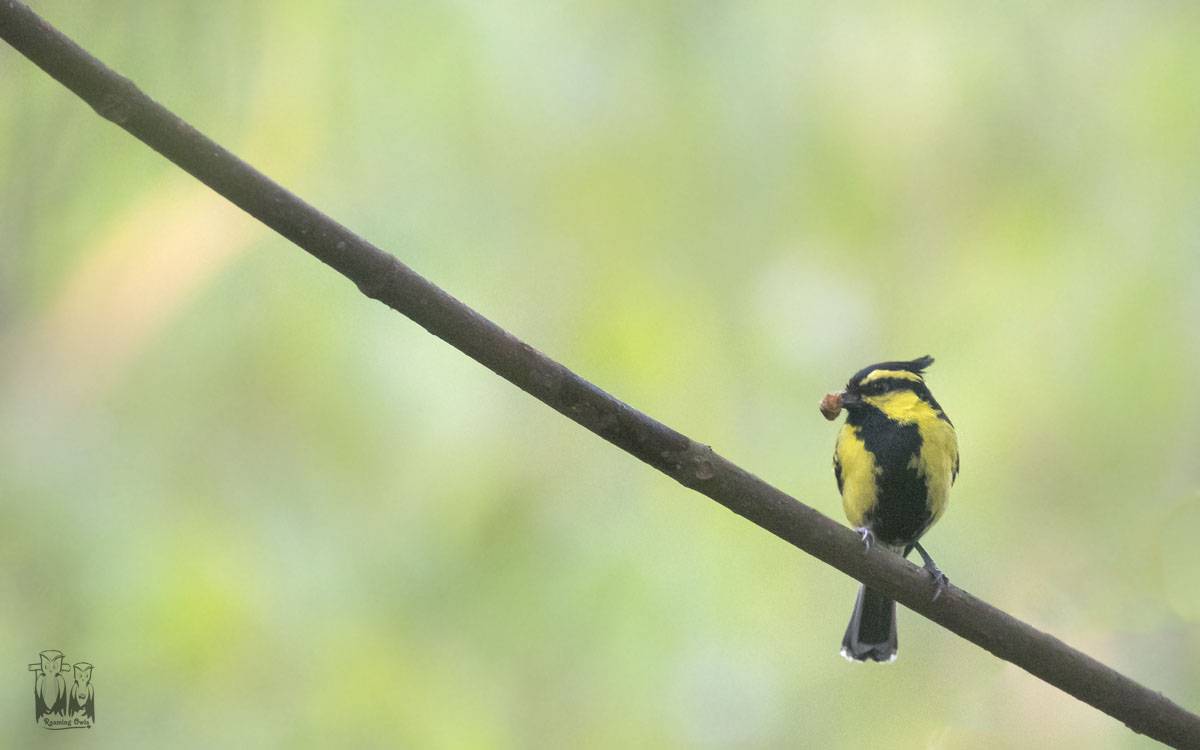
The black lored tit had built the nest right around the corner of the home stay road. All we had to do was sit and wait for it t return with food and take pictures !
Because of the mist we decided to go to Mahananda wildlife sanctuary and see many other colorful birds in that dense mixed wet forest. The Latpanchar homestay belongs to Sabir Subba who is also an excellent birding guide. Unfortunately his schedule was fully booked on the days we were there. So he arranged 2 other young birding guides who were watching us with great interest. When we went inside the sanctuary, the mist was not very dense. We saw maroon oriole at the top of a tree and there were black birds just jumping on the forest floor. We didn’t stand on the same place for a longer time as the place is infested with leeches. After the cinchona plantations, there were open ground which was dry as the trees were burnt off in that place. When we went there, our hero of the trip Rufous necked hornbill tookoff from a berry tree. It was far from the place we were standing, still we stood awe at the big bird flying away. While we were returning back, the driver who was waiting for us there showed us enthusiastically a very small colorful bird sitting on the side of the trail, when we went closer its the Emerald Cuckoo.
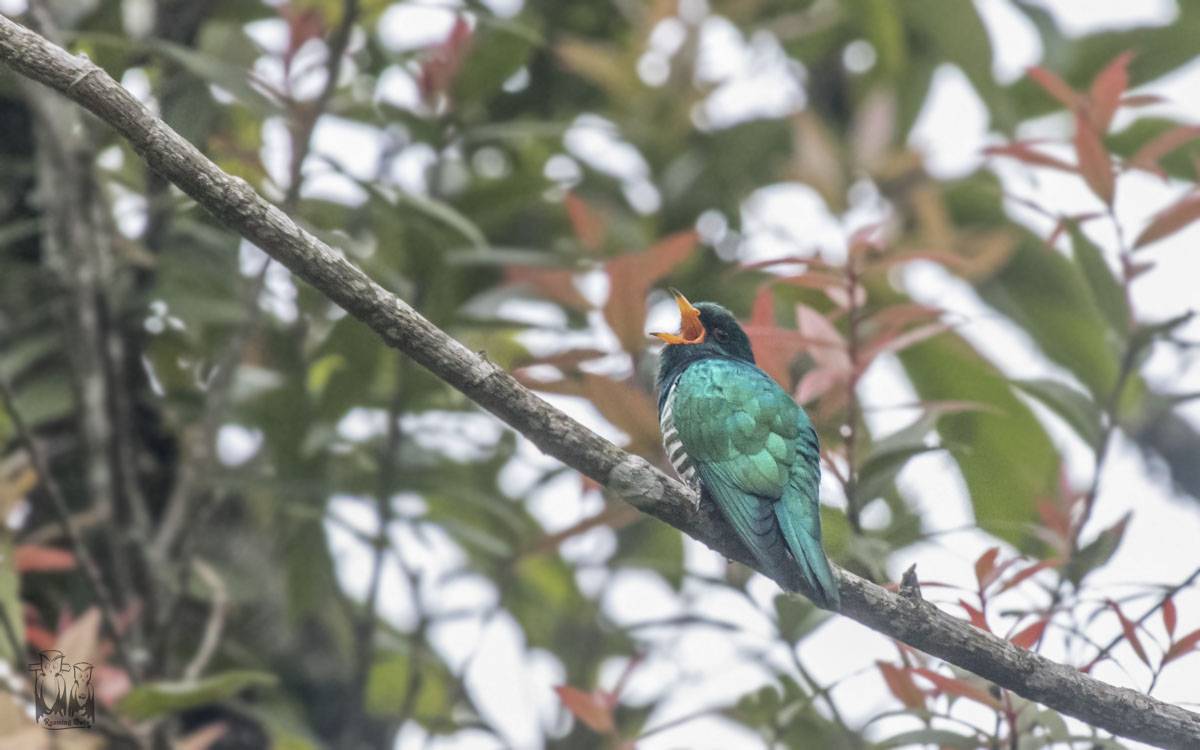
The prized catch – The emerald cuckoo. A bird not easily seen let alone photographed.
The two birding guides had seen chennai express movie, so when we told we were from Chennai they were eager to learn few Tamil words. So by the time when we were back to the homestay, they were calling me “Akka inge vaanga”. We went to the hornbill nesting tree again and decided to wait there till the bird comes. Few more photographers also came to the spot. Its a narrow trail with slope on one end. So we all carefully took our positions and sat silently. After 20 minutes, again wings flapping sound and this time it was coming nearer. In the mist, the big bird came to the nest with its mouth full of berries. When it flew to the hole, there were fully cameras clicking sound but again mist covered the tree. The next day weather was clear finally. The golden sunlight lit up the entire area and we finally appreciated the beauty of this hamlet. We then rushed to the hornbill nest and waited there enjoying the surroundings. Then we heard the familiarized wings flapping sound and the huge black bird with colorful paintings on its face, the Rufous necked hornbill came into our view.
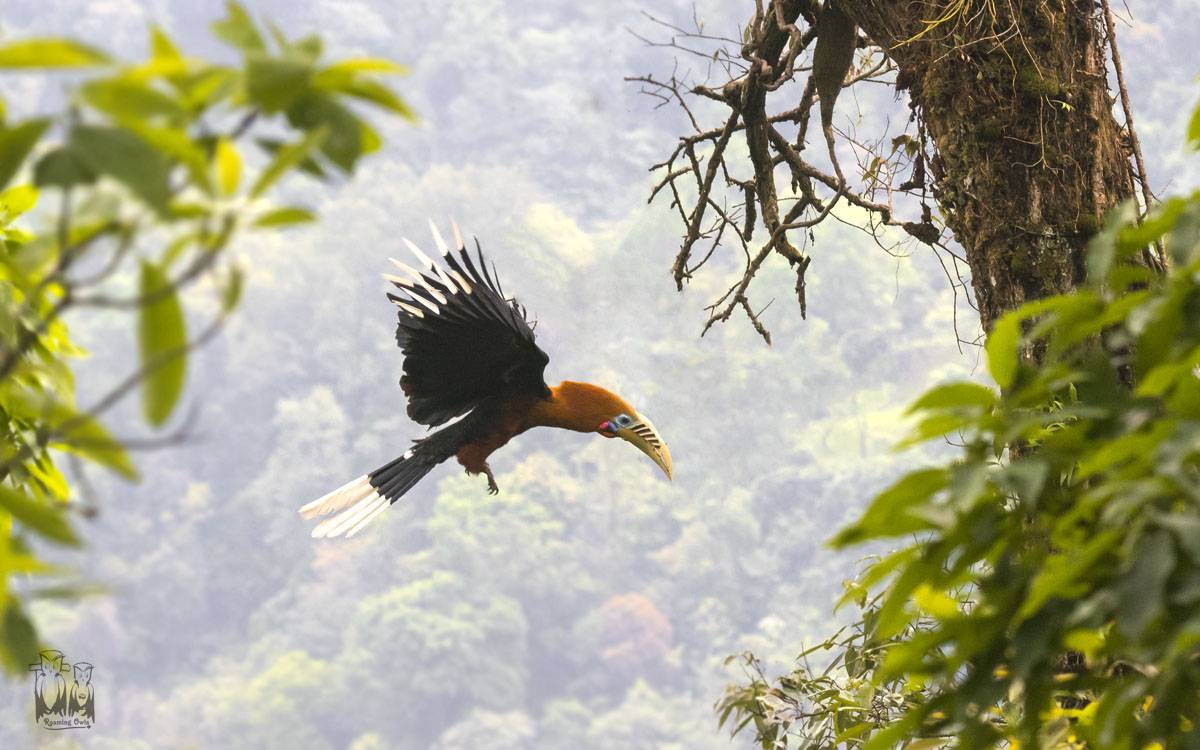
The bird that we came for – The rufous-necked hornbill (Aceros nipalensis). A large bird found only in dense forests.
Now we saw it in the golden sunlight we saw the colors and details of the bird clearly. There were moments which you don’t have to capture to keep it in memory. So I enjoyed the beauty of the bird just with binoculars, the bird was hanging on the nest hole and feeding its partner. We watched the full show till the bird flew away for the next hunting. When we were walking back in the trail, we saw the Long Tailed Broadbill pair and they didn’t mind us at all. So we saw this colorful birds also very closely and how lovely for the couple to coordinate and build a nest for them.
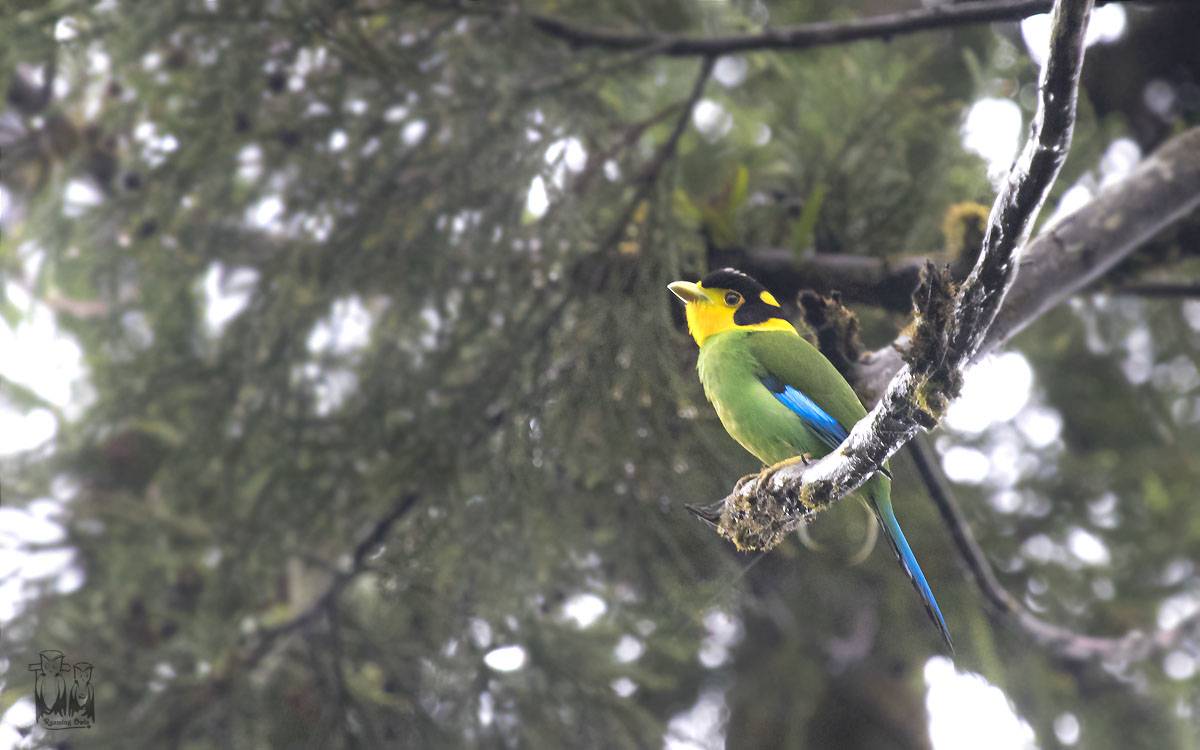
The long tailed broadbill is the most cute bird in India according to me. The pleasant colours are a treat to the eye.
By this time we were already overloaded with the long list of lifers .i.e first time we are seeing that species but to push our luck further, we went to Mahananda wildlife sanctuary in search of another colorful bird in that forest, the Redheaded Trogan. This time Sabir subba also joined us as he had few hours to spare for us. But unfortunately there was a fallen electrical cable blocking the enroute and we were about to return back,but Sabir Subba and Vinod decided to give it a try. They did some temporary setups to keep up the line so the jeep can pass. In Mahananda, we directly went to the dense patch of the forest where Redheaded Trogan usually was spotted. Within few minutes, Sabir Subba spotted the colorful trogan inside the dense cinchona trees. We couldn’t go closer, so we just saw this attractive shy bird from distance.
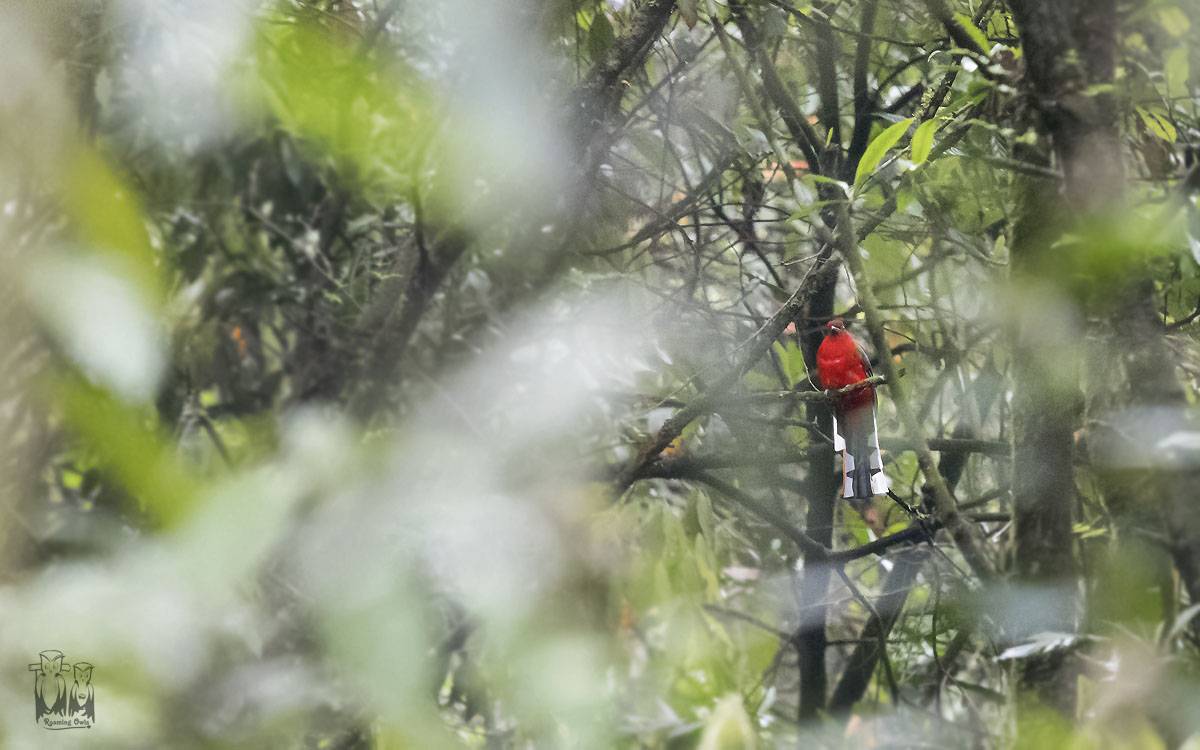
I could not get a clearer picture as he was very shy. we waited for a long time but the Red Headed Trogon came only for a few moments and then went away.
When we were all packed up and about to hop on the jeep, the Rufous necked hornbill was just hovering around the village. How lucky these village people were to live amidst these majestic creatures. Sabir subba who didn’t had time to spend with us in Latpanchar cared enough to come with us to Neora, so the rugged travel didn’t look bad at all. We Spotted laughing thrush,Great barbet and many other birds. We saw wild turmeric in bloom and when we were so happy to spot a single plant, Sabir Subba showed us a carpet of turmeric plants in bloom.
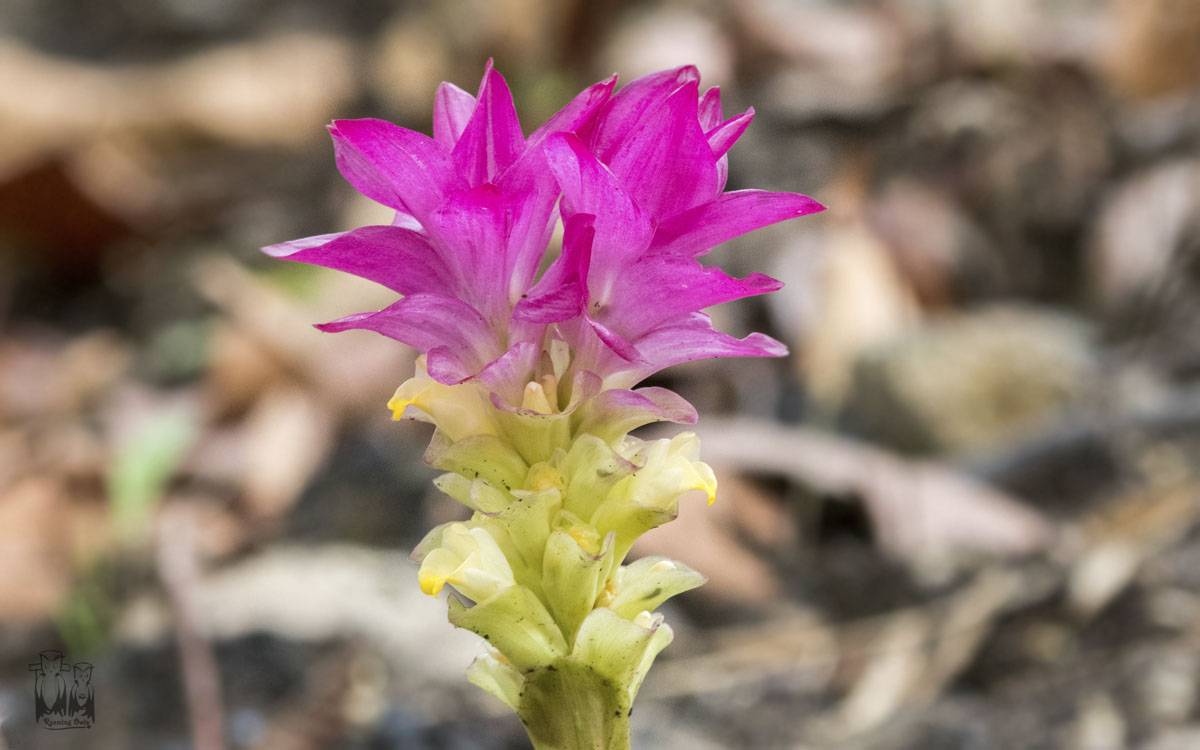
The beautiful flowers of wild turmeric (Curcuma)
When I told I was interested in orchids, Sabir Subba showed us few orchid plants hanging on the trees and informed us about the blooming seasons. Usually we don’t prefer homestays but we loved this homestay and we decided to come back again to see the orchids and other birds like Sultan Tit,Sunbirds in different season. There are few places in this world where the raw beauty of nature still exists and locals who appreciate the real value of the place. We are lucky to have visited one such place in this world!
Best time to visit Latpanchar
The best time to visit a place always depends on the purpose of your visit. If you would like to see this little village latpanchar in snow, then you have to visit in winter months from December – February. If you would love to see migratory birds and nesting birds then February- April should be the best time to visit. If you are interested in just scenery, April-June should do as the visibility will be much better.
Related post
Birding in Neora Valley
Thanks a lot Laya 🙂
Enjoyed this post Mathi ! Keep on writing ! I travel through your posts . Laya